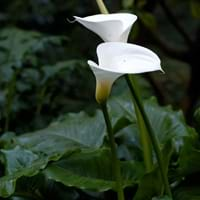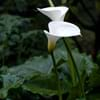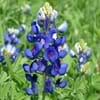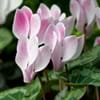Life Span
Perennial
Perennial
Type
Bulb, Flowering Plants
Flowering Plants
Origin
South Africa, Swaziland
Not Available
Types
Passionfruit, Fire glow, Gem rose, Blaze, Crystal blush
Aconitum napellus
Habitat
Swamps
Damp shady woods, meadows
USDA Hardiness Zone
8-10
12-15
Sunset Zone
2a, 2b, 5, 6, 8, 9, 12, 13, 14, 15, 16, 17, 18, 19, 20, 21, 22, 23, 24
21, 22, 23, 24
Habit
Clump-Forming
Oval or Rounded
Minimum Height
Not Available
Minimum Width
Not Available
Flower Color
Blue, Dark Purple, Light Purple, Red, White
Yellow
Flower Color Modifier
Bicolor
Not Available
Fruit Color
Not Available
Green
Leaf Color in Spring
Dark Green
Not Available
Leaf Color in Summer
Green, Dark Green
Not Available
Leaf Color in Fall
Green, Dark Green
Not Available
Leaf Color in Winter
Green, Dark Green
Not Available
Leaf Shape
Arrowhead
Compound
Plant Season
Autumn, Spring, Summer
Not Available
Sunlight
Full Sun, Part sun, Partial shade
Not Available
Growth Rate
Medium
Very Slow
Type of Soil
Clay, Loamy
Not Available
The pH of Soil
Neutral, Slightly Acidic
Not Available
Soil Drainage
Average
Not Available
Bloom Time
Spring, Summer
Spring
Repeat Bloomer
Yes
Not Available
Tolerances
Wet Site
Not Available
Where to Plant?
Container, Pot
Ground
How to Plant?
From bulbs, From Rhizomes, Seedlings, Transplanting
reseeds
Plant Maintenance
Medium
Medium
Watering Requirements
Over-watering can cause leaf problems or root diseases, Requires a lot of watering
Do not let dry out between waterings
In Summer
Lots of watering
Lots of watering
In Spring
Moderate
Moderate
In Winter
Average Water
Average Water
Soil pH
Neutral, Slightly Acidic
Not Available
Soil Type
Clay, Loamy
Not Available
Soil Drainage Capacity
Average
Not Available
Sun Exposure
Full Sun, Part sun, Partial shade
Not Available
Pruning
Prune to stimulate growth, Remove dead or diseased plant parts, Remove deadheads
Remove damaged leaves, Remove dead branches, Remove dead leaves
Fertilizers
All-Purpose Liquid Fertilizer
All-Purpose Liquid Fertilizer
Pests and Diseases
Armillaria mellea, Gray mold, Leaf spot, Powdery mildew, Pythium rot, Rhizoctonia crown rot, Root rot, Thripes
Red blotch
Plant Tolerance
Drought
Drought
Flowers
Yes
Not Available
Flower Petal Number
Single
Single
Fragrant Flower
Yes
Not Available
Fragrant Fruit
No
Not Available
Fragrant Leaf
No
Not Available
Fragrant Bark/Stem
No
Not Available
Showy Foliage
Yes
Not Available
Showy Bark
No
Not Available
Foliage Texture
Coarse
Bold
Foliage Sheen
Glossy
Not Available
Invasive
No
Not Available
Self-Sowing
No
Not Available
Attracts
Not Available
Hummingbirds
Allergy
Diarrhea, Intestinal gas, Vomiting
poisonous if ingested, Toxic
Aesthetic Uses
Beautification, Bouquets
Not Used For Aesthetic Purpose
Beauty Benefits
Not Available
Not Available
Environmental Uses
Air purification
Air purification
Medicinal Uses
Not Available
Analgesic, Anodyne, Diaphoretic, Homeopathy, Used as a sedative
Part of Plant Used
Flowers
Root
Other Uses
Showy Purposes
Not Available
Used As Indoor Plant
No
No
Used As Outdoor Plant
Yes
Yes
Garden Design
Not Available
Not Available
Botanical Name
Zantedeschia Aethiopica
Aconitum
Common Name
Calla Lily
aconite, monkshood, wolf's bane, leopard's bane, mousebane, women's bane, devil's helmet, Queen of all Poisons, blue rocket
In Hindi
Calla Lily
बच्छनाभ
In German
Calla-Lilien-
Eisenhut
In French
Lys calla
Queen of all Poisons
In Spanish
Cala
Queen of all Poisons
In Greek
Calla κρίνος
Queen of all Poisons
In Portuguese
Calla
Queen of all Poisons
In Polish
Calla Lily
Tojad
In Latin
Calla Lilium
Queen of all Poisons
Phylum
Magnoliophyta
Tracheobionta
Class
Liliopsida
Magnoliopsida
Order
Alismatales
Ranunculales
Genus
Zantedeschia
Aconitum
Clade
Angiosperms, Monocots
Angiosperms, Eudicots
Tribe
Zantedeschieae
Delphinieae
Subfamily
Aroideae
Not Available
Properties of Calla Lily and Queen of all Poisons
Wondering what are the properties of Calla Lily and Queen of all Poisons? We provide you with everything About Calla Lily and Queen of all Poisons. Calla Lily doesn't have thorns and Queen of all Poisons doesn't have thorns. Also Calla Lily does not have fragrant flowers. Calla Lily has allergic reactions like Diarrhea, Intestinal gas and Vomiting and Queen of all Poisons has allergic reactions like Diarrhea, Intestinal gas and Vomiting. Compare all the properties and characteristics of these two plants. Find out which of these plant can be used as indoor plant. If you are interested to decorate your house and garden, find out aesthetic uses, compare them and select the plant which will beautify your surrounding. Along with beautification, try comparing medicinal and edible uses of Calla Lily and Queen of all Poisons and you can choose the plant having best and most benefits.
Season and Care of Calla Lily and Queen of all Poisons
Season and care of Calla Lily and Queen of all Poisons is important to know. While considering everything about Calla Lily and Queen of all Poisons Care, growing season is an essential factor. Calla Lily season is Autumn, Spring and Summer and Queen of all Poisons season is Autumn, Spring and Summer. The type of soil for Calla Lily is Clay, Loamy and for Queen of all Poisons is Not Available while the PH of soil for Calla Lily is Neutral, Slightly Acidic and for Queen of all Poisons is Not Available.
Calla Lily and Queen of all Poisons Physical Information
Calla Lily and Queen of all Poisons physical information is very important for comparison. Calla Lily height is 60.00 cm and width 60.00 cm whereas Queen of all Poisons height is Not Available and width Not Available. The color specification of Calla Lily and Queen of all Poisons are as follows:
Calla Lily flower color: Blue, Dark Purple, Light Purple, Red and White
Calla Lily leaf color: Dark Green
Queen of all Poisons flower color: Yellow
- Queen of all Poisons leaf color: Not Available
Care of Calla Lily and Queen of all Poisons
Care of Calla Lily and Queen of all Poisons include pruning, fertilizers, watering etc. Calla Lily pruning is done Prune to stimulate growth, Remove dead or diseased plant parts and Remove deadheads and Queen of all Poisons pruning is done Remove damaged leaves, Remove dead branches and Remove dead leaves. In summer Calla Lily needs Lots of watering and in winter, it needs Average Water. Whereas, in summer Queen of all Poisons needs Lots of watering and in winter, it needs Average Water.





